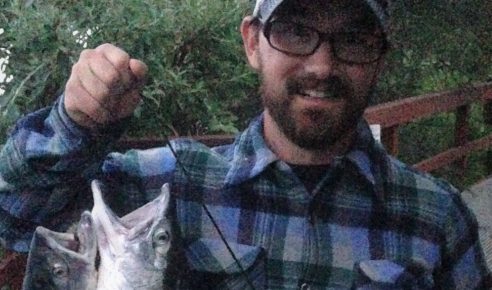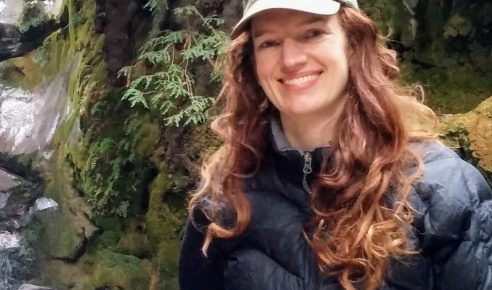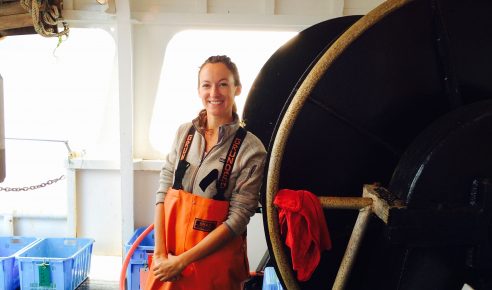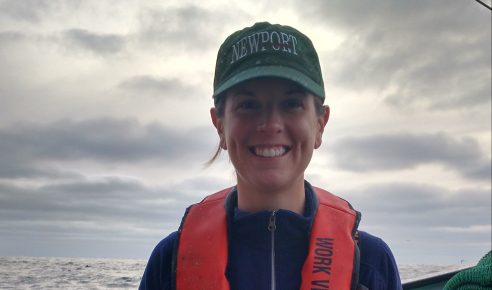Author Archives: Punt Lab
Kate Richerson
Past Postdoctoral Fellow
Margaret Siple
Past Postdoctoral Fellow
Christine Stawitz
Past Postdoctoral Fellow
New features for spatio-temporal analysis using FishStats: An improved model for biomass sampling data, spatial expansion of age/length compositions, and short-term forecasts for distribution shift
James Thorson1 and Melissa Haltuch1
1NWFSC
January 9th, 2018 9:00 (PST): FSH 203
New features for spatio-temporal analysis using FishStats: An improved model for biomass sampling data, spatial expansion of age/length compositions, and short-term forecasts for distribution shift
In this talk, we quickly summarize the FishStats spatio-temporal toolbox (www.FishStats.org), including the spatio-temporal approach to index standardization. We then highlight three research topics since my last Think Tank in Nov. 2016. First, we highlight a new “Poisson-link delta model” (PLDM) that is more biological interpretable and parsimonious than the conventional delta-model that is widely used in fisheries science. We also discuss how this PLDM is interpreted as a computationally efficient approximation to a compound-Poisson-gamma model. Second, we discuss ongoing research using a vector autoregressive spatio-temporal (VAST) model to expand age and length composition samples, including a calculation for input sample size based on estimation variance. A simulation experiment shows that the VAST model has 20-30% lower errors than the design-based estimator, but a case-study application involving lingcod shows that small differences in composition expansion can result in a large difference in scale when used in an assessment model. Finally, we discuss ongoing research regarding short (1-3 year) forecasts of distribution shift using a climate-envelope or spatio-temporal model using retrospective skill testing. This shows that autoregressive spatio-temporal errors are important to generate unbiased forecasts with good forecast interval coverage. We therefore conclude by recommending increased use of the Poisson-link delta model, particularly for forecasting future distribution shifts, but further research regarding spatio-temporal expansion of composition data.
What next for “r4ss”, a successful but aging R package?
Ian Taylor1
1NOAA
November 28, 2017 9:00 (PST): FSH 203
What next for “r4ss”, a successful but aging R package?
The r4ss package, available at https://github.com/r4ss/r4ss, is a widely used set of R tools for to support the Stock Synthesis assessment platform. Thanks to a long history of development and contributions from over 20 people, it has been effective at increasing the efficiency of model explorations and writing assessment reports. However, the accumulated technical debt of years worth of edits to aging code have made adapting to evolving uses of the package more difficult. I will provide a brief overview of the package, discuss some of the key areas needing work, and hopefully get some necessary feedback on a variety of ideas for where things could go in the future.
Improving stock assessments from two perspectives: time-varying selectivity and data weighting
Haikun Xu1
1SAFS
November 14, 2017 9:00 (PST): FSH 203
Improving stock assessments from two perspectives: time-varying selectivity and data weighting
In this talk, I will present my recent research work regarding time-varying selectivity and data weighting in stock assessments. Selectivity is a key process in stock assessments and is typically varies with both age and time. To account for autocorrelated variation in selectivity, a common phenomenon in fisheries, I developed a new semi-parametric age- and time-varying selectivity method and implemented it in Stock Synthesis. Simulation experiments showed that the new selectivity method can improve the precision of model estimates from a data-rich assessment, given that the true deviations in selectivity are 2-dimensional (age and time) autocorrelated. Using the data for North Sea herring (Claupea harengus) as a Stock Synthesis case study, I found that the deviations in fishery selectivity were highly autocorrelated across both age and time, and the new selectivity smoother improved model fit and reduced the pattern in Pearson residuals for age composition. In the second part, I compared the three existing data-weighting methods (McAllister-Ianelli, Francis, and Dirichlet-multinomial) in Stock Synthesis to offer users good practices for weighting composition data when the new age- and time-varying selectivity feature is turned on. Simulation results suggested that when selectivity varies over time, the Dirichlet-multinomial method performs best in terms of weighting composition data. Moreover, it can be combined with the new age- and time-varying selectivity feature to simultaneously weight composition data and penalize selectivity variation inside the model.
Evaluation of data-poor stock assessments for tuna fisheries
Maite Pons1
1SAFS
November 07, 2017 9:00 (PST): FSH 203
Evaluation of data-poor stock assessments for tuna fisheries
For the “principal market tunas”, like bluefin, bigeye, yellowfin, albacore and skipjack, stock assessments are performed regularly and a variety of management measures are in place to protect these stocks from overfishing. However, there are also other Scombrid species like mackerels and bonitos (commonly referred to as “small tunas”) that account for a notable proportion of the total tuna and tuna-like species catch. These species usually are not assessed and are currently not managed. Small tunas sustain important regional commercial fisheries in many coastal communities throughout their spatial distribution and their assessment is essential to be able to provide management advice which can help to ensure long-term sustainability. For most of these species there is a shortage of data that inhibits the performance of a “full” stock assessment and this is probably the most important reason why they have not been assessed so far. In general, catch time series from official tuna Regional Fisheries Management Organizations (tRFMOs) are incomplete or pooled by group of species. But, length composition data is usually available for a high proportion of these stocks thanks to numerous sampling programs implemented by different member countries of each tRFMO. In particular, the International Commission for the Conservation of Atlantic tunas (ICCAT) have suggested that different “data-limited” approaches that use life-history characteristics and length compositions of the catch should be considered in order to provide scientific information on the status of these stocks and guide management actions. The objective of the present study is to evaluate appropriate assessments and management options for small tunas in the Atlantic Ocean. First we took a “data-rich” stock (i.e. North Atlantic Albacore) as a case study, and we applied a set of different length-based and catch-based “data-poor” assessments in order to compare model outputs. Next, we will use a Management Strategy Evaluation (MSE) to determine the best combination of data, assessment and control measures to meet management objectives. Preliminary results related to the simulation modeling and data-poor assessment performance will be presented.
Deconstructing biomass to create an index of future overexploitation risk
Lewis Barnett1
1NOAA
October 24th, 2017 9:00 (PST): FSH 203
Deconstructing biomass to create an index of future overexploitation risk
Fishery management reference points focus on current population size of reproducing individuals (spawning stock biomass, SSB) and the fraction of unfished egg production that would remain after fishing at a constant rate for many years (spawning potential ratio, SPR). This perspective does not consider the effect of age- and size-structure on anything except numbers of eggs (e.g., SSB) and ignores near-term variation in SSB and recruitment (e.g., SPR) that can arise from transient fluctuations in population structure, which can contribute to the short-term risk of overexploitation. We build on recent research exploring how the age structure of fished stocks changes over time, using stock assessment model output and simple simulation of age-structured models to test the utility of candidate metrics for monitoring storage effects from age structure that buffer the influence of environmental variation on recruitment and SSB. We show how two populations with identical vital rates, exploitation rates, SSB and SPR can have striking divergence in short-term stock status because of different initial age structures. Preliminary results indicate that several common descriptors of change in age structure are influenced more by recruitment variation than the age diversity within the SSB, yet we identify a set of more robust metrics for future testing in potential application as the basis for a novel limit reference point or an additional index of assessment uncertainty.
Reconstructing the historical abundance of West Coast Dungeness crab (Cancer magister) using catch data
Kate Richerson1
1NOAA
October 17th, 2017 9:00 (PST): FSH 203
Reconstructing the historical abundance of West Coast Dungeness crab (Cancer magister) using catch data
US Dungeness crab (Cancer magister) landings are valued at >$200 million annually, making it one of the most economically-important West Coast fisheries. The fishery has been managed by the states under a simple “3-S rule” (referring to size, sex, and season) since the 1940s. No stock assessment is performed, but the conventional wisdom suggests that the vast majority of legal-sized crabs are taken every season. We use catch data in the form of fish tickets and some limited logbook data in combination with depletion estimators to estimate the pre-season abundance of legal-sized crabs from 1982-2015. This work is still in progress, but results so far indicate that most legal crabs are indeed taken each season, but that populations are stable or increasing. We find evidence for density-dependent catchability, and suggest that failing to account for this can bias abundance estimates downward.



